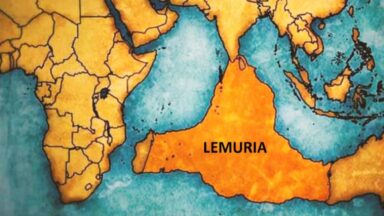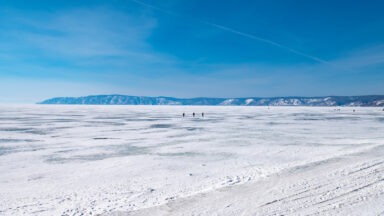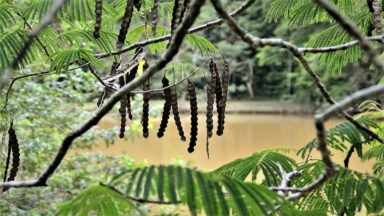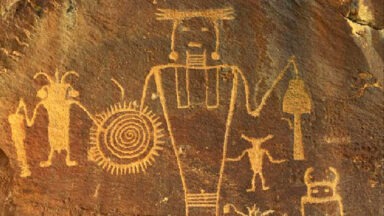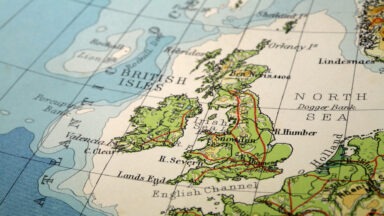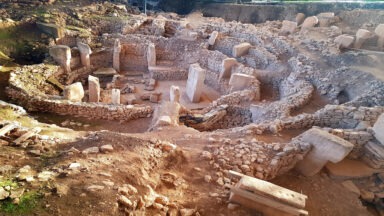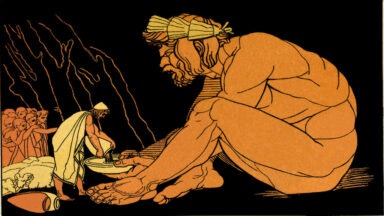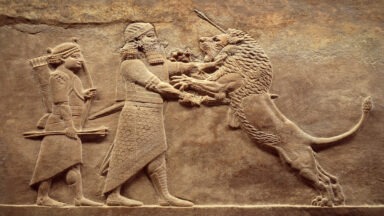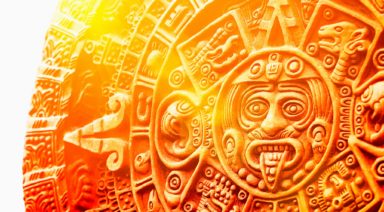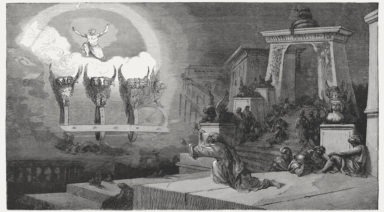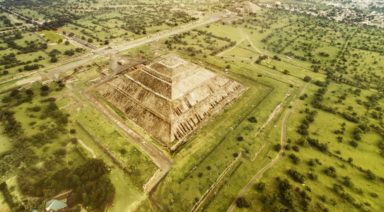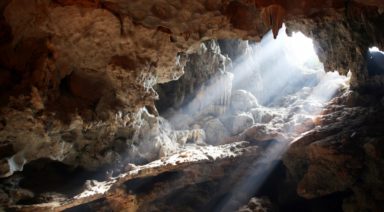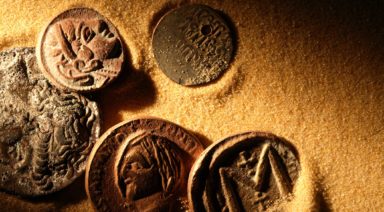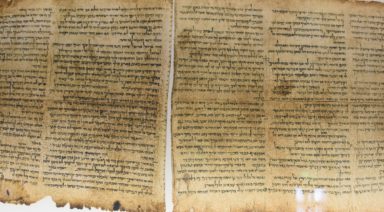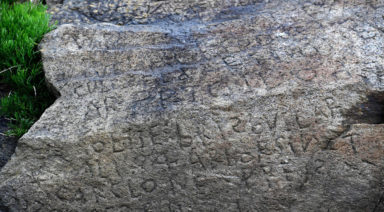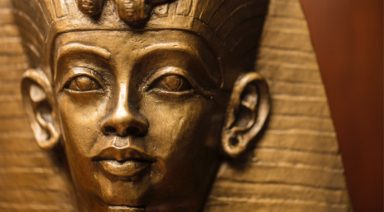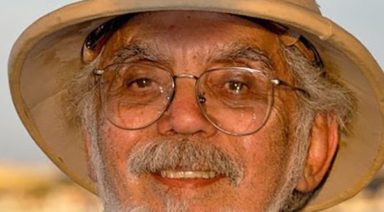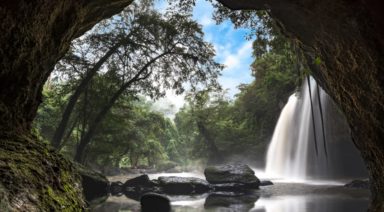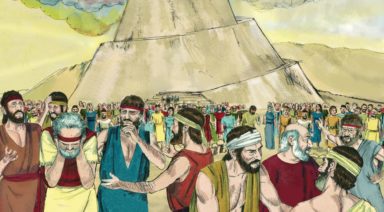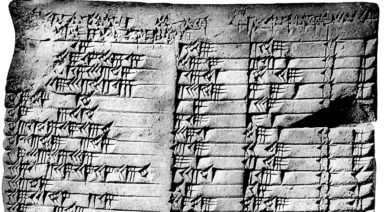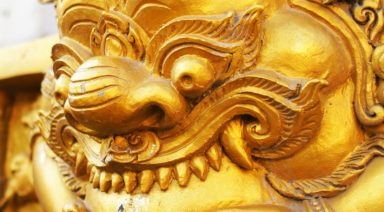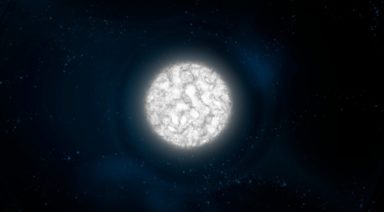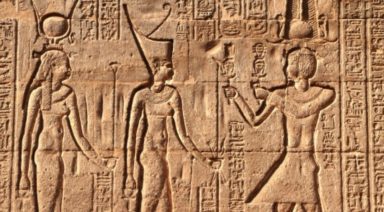An Update on the Nazca Mummies: There’s More to Come
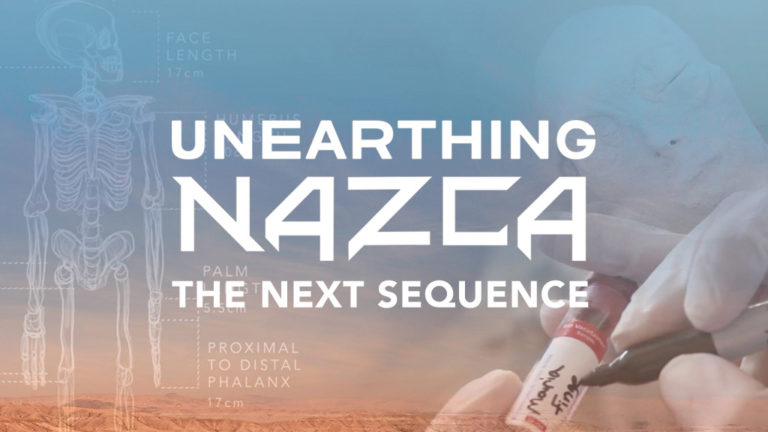
Just under a year ago we released the short series, Unearthing Nazca, detailing the discovery of an anomalous mummy found in Peru. Predictably, the revelation stirred up excitement, as well as some controversy and criticism. Since then, a considerable amount of conjecture has circulated on the internet, with articles and headlines speculating as to what we found. Now, we’d like to address some of those claims and provide an update on where we stand.
Without having access to bone and tissue samples, CT scans, or laboratory test analysis, a number of publications made claims that the results were complete on the Nazca mummy, known as Maria. Headlines citing DNA evidence that conclusively showed Maria to be 100 percent human were touted, without due diligence to confirm those assertions.
Sensational Headlines
Many cited the internet’s go-to fact checking website, Snopes, as the authoritative voice to settle the case, despite the website’s lack of any substantial investigation. Snopes aimed to fact check the claim that “a corpse found in Nazca, Peru is that of an alien,” giving it a rating of “false.”
While the provenance of the mummy was part of others’ online speculation, we have made it a priority to avoid making any definitive claims, until all of the test results are in. We’ve been careful with our verbiage, knowing that sensitivity and patience are crucial to conducting an objective investigation.
Snopes goes on to compare our reporting with that of a completely unaffiliated website, Disclose.tv, and the headline it posted with our video, which read “New Alien Mummy Discovered in Peru…”
It then continues to criticize the beliefs and previous work of the scientists and journalists involved in the study, rather than focusing on the evidence they provide.
Another one of the recurring tabloid headlines we noticed made such claims as, “DNA results are in on the ‘mummified aliens’… and they are REAL beings.”
While we’ve already addressed our stance on qualifying the mummy, one thing to point out here is that there is some truth in this headline, we believe Maria was a real being. However, one should note that the author is intentionally using ambiguity to bait the reader. Yes, we believe the mummy was once a real being, but no one here is jumping to the conclusion that she was an extraterrestrial being.
Another claim cited by a number of publications was that the Paleo DNA Laboratory at Lakehead University in Ontario finished conducting its DNA sequencing and that the results were conclusive; the mummy was human.
While we are working with this laboratory, these results are not conclusive. In fact, nothing is conclusive at this moment and we are working on running DNA sequencing at a number of labs in several countries to ensure proper procedure. This is a very time-intensive process that requires a lot of resources, coordination, and expert opinion to remove unwanted variables, such as DNA contamination and inconclusive analyses. But as the results come in, we promise to give you the details as we know more.
The Difficulties of DNA Sequencing
One of the most difficult variables to control for in DNA sequencing is contamination, and it can come from a number of sources. Given the circumstances, our samples weren’t collected in the most sterile environment, therefore it can take some time to distinguish between DNA from those who came into contact with Maria, and actual DNA samples from her bone.
Once in the lab, the challenge is still not over. Aerosol contamination from solid or liquid particles can interfere, as well as improper handling, or cross contamination from previous sequencing. It’s a very delicate process, to say the least.
There are also various sequencing protocols based on different laboratories and their chosen methodologies. Before a lab begins their process, the sequencing must be based on a question, such as: “does this sample match the DNA of a primate?” or, “does this sample match the DNA of modern humans?” From there, the sample is compared to the specific DNA in question, and that one question can take months or even years to answer.
This is why we have made the costly and time-consuming decision to have multiple labs sequence Maria’s DNA – think of it like getting a second opinion from another doctor; with such sensitive material, we want to have the best information we can get.
Archeological Precedent
If we were to compare this process to the most recent precedent in archeology, we would have to consider the discovery of the Denisovans. When archeologists found a 40,000-year-old finger bone of a hominin ancestor in a Siberian cave, they didn’t realize its anomalies for nearly two years. Once they did, it took another two years to fully sequence its DNA, before they could confidently classify it as a previously unknown species.
When the Denisovan discovery was made, it received pushback from the scientific community by those unwilling to accept the fact that, not only did another hominin ancestor exist, but it may have also interbred with our human ancestors. It was a controversial discovery, indeed.
And with a controversial discovery such as Maria, it can be difficult to find archeologists and laboratories willing to get involved. Cultural, social, and political sensitivities all play a role in the decision of those who may fear a negative outcome could affect their careers and reputation among colleagues. This is understandable, though it limits the pool of those we can work with to acquire results in a timely fashion.
But as the sensationalism around the discovery has faded over the past year, we have been in contact with a number of new scientists, domestically and abroad, who are excited to lend their expertise in helping us uncover the true origins of the mummy, known as Maria. We are excited to move forward with our research and will keep you informed along the way.
By reexamining our history we believe we can shift our paradigm and learn more about ourselves in the process. We care about more than headlines, we care about seeking truth.
Watch the original report below:
The History of Lemuria: Discover the Lost Continent
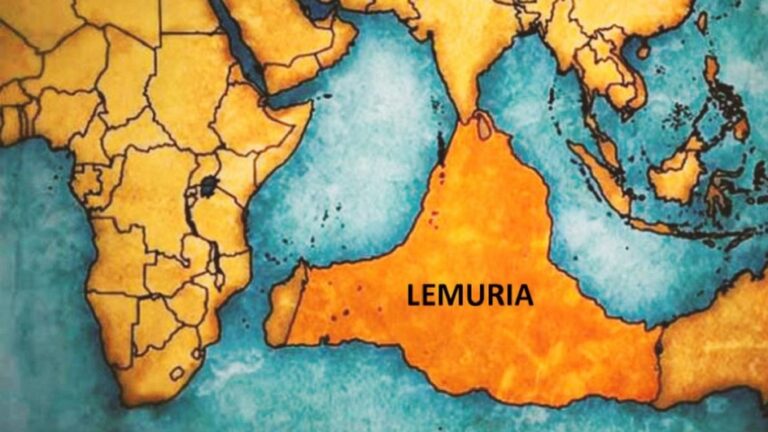
Lemuria, also referred to as Mu, was a vast, ancient continent said to have existed in the Pacific Ocean, inhabited by an advanced and spiritually developed civilization. It significantly influenced human evolution and left a legacy that endures to this day. In this article, we explore what Lemuria was, its origins, evolution, and impact on human history.
Table of Contents
- What Was Lemuria?
- Origins and Evolution of Lemuria
- Life in Lemuria
- Lemurian Technology and Knowledge
- The Relationship Between Lemuria and Atlantis
- The Fall of Lemuria
- The Legacy of Lemuria
What Was Lemuria?
Lemuria was a continent located in the Pacific Ocean, home to one of the earliest advanced civilizations on Earth. The Lemurians were highly spiritual beings who lived in perfect harmony with their surroundings. Their civilization was known for its profound knowledge of energy and its ability to manipulate it for the well-being and evolution of their society.
The Lemurian civilization thrived for thousands of years, developing advanced technologies that allowed them to build great cities and temples dedicated to meditation and spiritual connection. Lemuria was also a center of knowledge and wisdom, where various spiritual and scientific disciplines were taught and practiced. The Lemurians were known for their telepathic communication abilities and their capacity to access higher dimensions of existence, which enabled them to reach high levels of evolution and consciousness.
In Gaia’s series Initiation, experts examine the origins of many of the legends surrounding Lemuria throughout the Pacific Rim, as well as the clues that lead to Mu’s catastrophic demise.
Origins and Evolution of Lemuria
The history of Lemuria begins approximately 200,000 years ago when the Alithir, an advanced race, arrived on Earth to raise the planet’s vibration and encode the water. These highly evolved beings chose the continent of Lemuria as their home, establishing a civilization that would become a beacon of light and knowledge for the world.
The evolution of Lemuria was marked by a deep respect for nature and an advanced understanding of cosmic energies. The Lemurians developed technologies that allowed them to harness the energy of natural elements, using resonance and vibration to create sustainable structures and systems. Their ability to work in harmony with nature enabled them to thrive for thousands of years, maintaining a perfect balance between technological development and spirituality.
As Lemuria grew and evolved, it became a center of cultural and spiritual exchange. The Lemurians established relationships with other advanced civilizations of the time, sharing knowledge and technologies that would benefit humanity as a whole. This intercontinental cooperation allowed Lemuria to expand its influence and leave a lasting legacy in Earth’s history.
Life in Lemuria
Life in Lemuria was deeply integrated with nature and cosmic energies. The Lemurians lived in harmony with their surroundings, practicing an advanced spirituality that permeated every aspect of their existence. Their society was based on cooperation, peace, and balance, creating a rich culture of spiritual knowledge and practices.
- Peaceful society: The Lemurian society was characterized by its focus on peace and cooperation. There were no wars or conflicts, as everyone worked together for the common good.
- Natural homes: Lemurian homes were built with natural materials and energetically aligned with the environment. These sustainable structures provided comfort and harmony with nature.
- Spiritual education: From an early age, Lemurians received an education focused on spiritual development and connection with the universe. This allowed them to grow with a deep understanding of their place in the cosmos.
- Telepathic communication: The Lemurians had telepathic abilities, facilitating effective and profound communication among themselves. This eliminated misunderstandings and promoted greater social unity.
- Holistic health: Medicine in Lemuria was holistic, combining spiritual and scientific knowledge. They used energy and medicinal plants to heal and maintain well-being.
- Community rituals: Ceremonies and rituals were an essential part of Lemurian life, strengthening social cohesion and connection with cosmic energies. These events included collective meditations and celebrations of natural cycles.
- Relationship with nature: Daily life was synchronized with natural cycles, respecting and honoring the Earth and all its beings. This respectful relationship ensured the sustainability and abundance of resources.
Lemurian Technology and Knowledge
The Lemurian civilization was known for its advanced technology and profound understanding of natural energies. The Lemurians developed various technologies that allowed them to live in harmony with nature and harness cosmic energies for their benefit.
- Crystal energy: The Lemurians used crystals to store and channel energy. These crystals were essential in their healing and communication technologies.
- Resonance technology: They used resonance and vibration for construction and healing. This technology allowed them to create structures and regenerate tissues using specific frequencies.
- Solar energy utilization: Solar technology was highly advanced in Lemuria. They used devices to capture and store solar energy, providing a sustainable energy source.
- Coded water systems: The Lemurians encoded water with specific energies for healing and growth. This knowledge improved the health and vitality of their crops and themselves.
- Light ships: They developed ships capable of traveling through dimensions using light and cosmic energy. These ships facilitated contact with other advanced civilizations.
- Sacred geometry knowledge: Sacred geometry was used in all their constructions and technologies. Geometric patterns ensured energetic alignment and resource efficiency.
- Planetary energy networks: They created a network of connected energy points that facilitated energy transfer and long-distance communication. This network maintained balance and harmony throughout Lemuria.
The Relationship Between Lemuria and Atlantis
Lemuria and Atlantis were two advanced civilizations that existed during different periods, though there was a time when they coexisted and maintained contact. Both civilizations shared knowledge and technologies, establishing a relationship of cultural and spiritual exchange. The Lemurians and Atlanteans collaborated on several projects, mutually benefiting from each other’s discoveries and advancements.
The relationship between Lemuria and Atlantis was based on cooperation and mutual respect. The Atlanteans, who emerged after the Lemurians, adopted many of the spiritual and technological practices developed in Lemuria. This exchange allowed both civilizations to reach high levels of evolution and consciousness, significantly influencing the progress of humanity.
However, as both civilizations grew, differences in their approaches and philosophies began to emerge. While the Lemurians focused more on spirituality and harmony with nature, the Atlanteans began to develop technologies aimed at control. These differences eventually led to tensions and conflicts that contributed to the fall of both civilizations.
The Fall of Lemuria
The fall of Lemuria was a cataclysmic event that marked the end of a golden age of wisdom and peace. According to various esoteric traditions, Lemuria was destroyed by a series of natural disasters, including earthquakes and volcanic eruptions, that submerged much of the continent into the Pacific Ocean. This event was seen as a necessary energetic rebalancing of the Earth.
Before their fall, the Lemurians knew their time was coming to an end. Many of them migrated to other parts of the world, carrying with them their knowledge and traditions. These survivors established new communities in regions such as Asia, the Americas, and Africa, where they influenced the development of local civilizations and planted the seeds of new spiritual cultures.
Despite the physical destruction of Lemuria, its legacy continued through the stories and teachings passed down by the survivors. These stories became the foundation of many mythologies and belief systems around the world, keeping the memory of Lemuria alive and preserving its contribution to the spiritual evolution of humanity.
The Legacy of Lemuria
The legacy of Lemuria is evident in various spiritual and cultural traditions around the world. The knowledge and practices of the Lemurians were integrated into the cultures of Asia, the Americas, and Africa, influencing their belief systems, ceremonies, and social structures. This legacy can be seen in the similarities between the mythologies and spiritual practices of these regions.
The Lemurian teachings on connecting with nature and utilizing cosmic energies have endured through the centuries. These teachings are reflected in practices such as meditation, the use of crystals for healing, and the application of sacred geometry principles in architecture. The influence of Lemuria is especially notable in indigenous wisdom and shamanic traditions.
Today, many seekers and spiritual communities continue to explore and honor the legacy of Lemuria. Through study and spiritual practices, they strive to revive ancient knowledge and apply it to the modern world. This renewed interest in Lemuria highlights the ongoing relevance of its wisdom in the quest for balance and harmony with nature and the cosmos.


